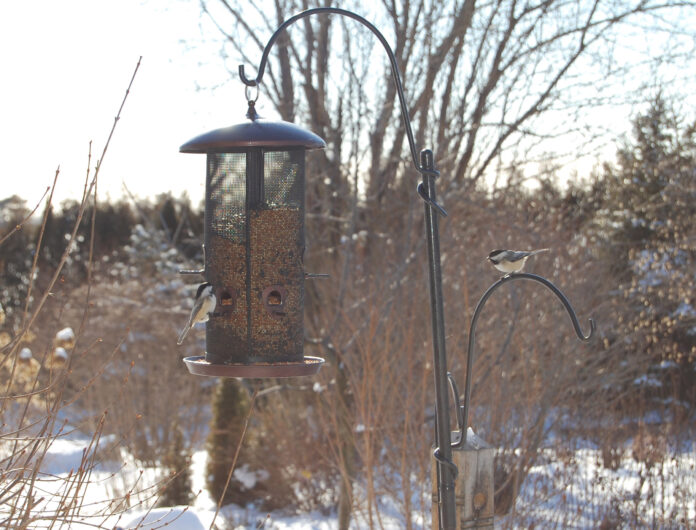
By Mark and Ben Cullen
It is not like they ever left. The cardinal that lands on an evergreen branch and creates an explosion of soft snow is a Canadian sight to behold.
As our migratory bird friends (and some human friends) go south, we are left with each other. And how delightful is that! This is bird feeding season and now is a great time of year to clean and refill your birdfeeders, acquire a birdbath heater, and take this last planting opportunity to put some bird friendly plants in your garden.
Let us start with your garden.
- Don’t cut down your ornamental grasses and herbaceous perennials. The seed heads that stand are a buffet counter for birds, especially when the snow covers the ground and access to earth-bound seeds is no longer an option.
- Plant fruit producing Mountain Ash, native American cranberry, Serviceberry, Saskatoon berry and crab-apple trees. Many birds find fruiting plants most enticing in the winter, when they are looking for quick energy and the fruit has matured and softened.
- Birds need shelter. Especially during the winter months when a cold wind blows. Their favourite protection are native black and white cedars. Birds find comfort there, forage the seeds in winter and will often nest in cedars some spring. Any evergreen provides protection for birds come winter. The cardinal that finds refuge in a spruce tree is just one example. Pine, fir, and junipers can all do the trick.
- Birds Canada has a very helpful website that addresses the issue nicely by allocating “Bird Garden Zones” across the country. The Bird Garden Zone map carves Canada into 22 zones. Extensive lists of plants are offered for each zone, all native, that are known to attract birds. Click the plant that appeals to you and learn cultural information about the size, shape and fruiting features of the plant, its growing zone limitations, preferred soil type and more. It is handy, quick, and fun. https://www.birdscanada.org/you-can-help/bird-gardens/
We note that not all plants listed are easy to find at a garden-variety retailer. You may have to search online for suppliers of, say, striped maple or fleshy hawthorn. Another fun winter project if you are planning on spring planting.
Feeding the birds, with an eye to helping them get through the winter in good health, requires a little planning and thought. Our top tips:
a. Clean bird feeders every couple of weeks with a mild solution of soap. Disease manifests itself in damp, rotting seeds.
b. Birds need water. Open water of any kind, providing it is clean, attracts a lot of birds. Ben leaves a bubbler in his pond all winter. Birds hop up to the edge of the ice and take a drink all winter long. If you have a bird bath, use a bird bath heater to keep the water open.
c. Project Feeder Watch is a citizen-science based method of counting birds and registering them in the Birds Canada database. The “Watch” started November 13th and runs all winter, so there is lots of time for you to sign up at www.birdscanada.org.
d. Host a birdathon. Bring some friends together in your neighbourhood to watch, identify and study birds. Have fun, share experiences and knowledge, and watch your winter melt away in birding activity. Mark Cullen is an expert gardener, author, broadcaster, tree advocate and Member of the Order of Canada. His son Ben is a fourth-generation urban gardener and graduate of University of Guelph and Dalhousie University in Halifax. Follow them at markcullen.com, @markcullengardening, and on Facebook.

